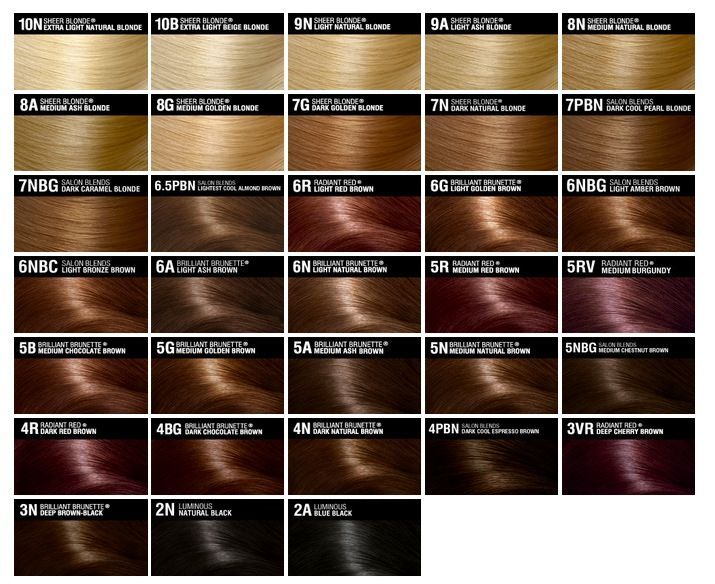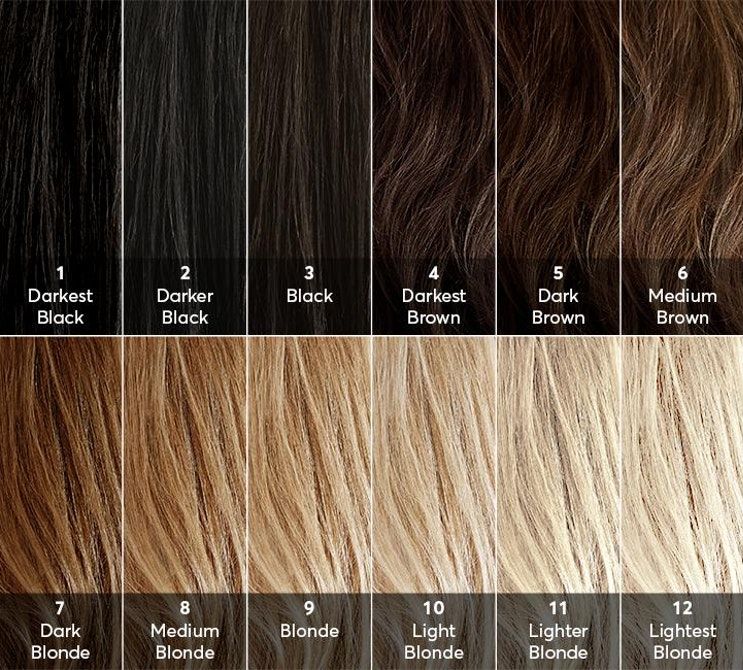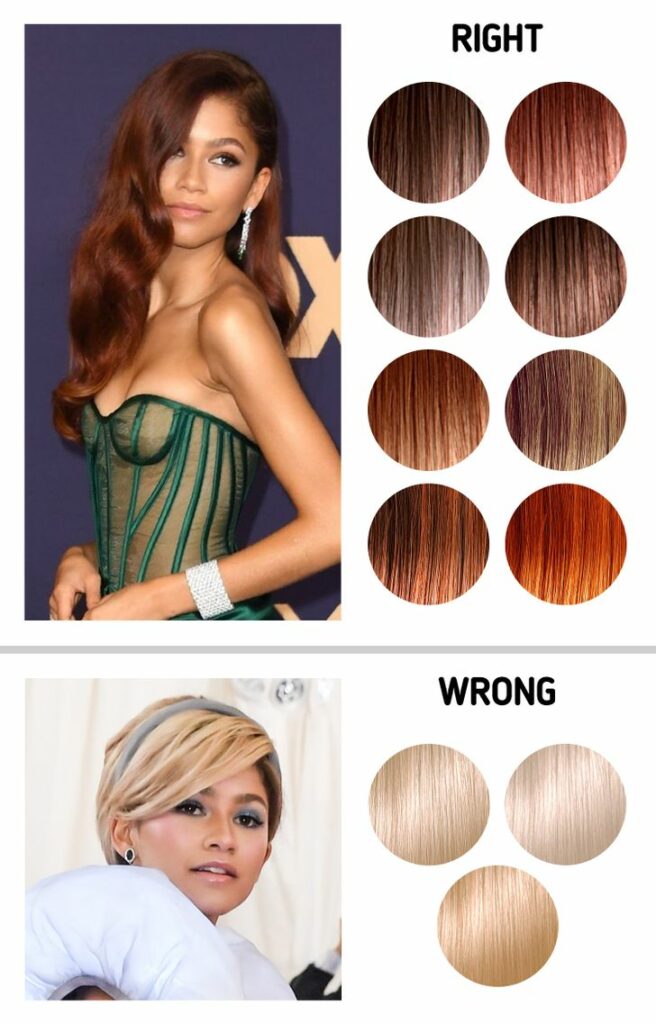Have you ever gone to the salon to get your hair treated and came across a deeply detailed hair chart? Have you ever had a hard time figuring out what exactly it is that this hair color chart is talking about?
Hair color level charts can be different from hair brand to hair brand. This is because different brands use different colors and techniques to achieve any hair color that the client wants. Depending on the brand, the hair color chart doesn’t have to be a chart at all. Some even have a hair color wheel that tells them all they need to know about hair colors. This can be frustrating to the customers and the clients who just want a simple point in the direction of their desired hair color. Fortunately for you, this article will help you understand the various hair color charts and numbering systems. Keep reading to find out what these are.
The international hair coloring system explained
During your customized in-salon consultation, your colorist will most likely use the international color numbering system to determine which depth and tones/reflects would work best for you and your hair. One of the most important tools for better understanding the complexities of your in-salon hair color treatment is the decoding of the hair color numbers system.
A hair color number can have up to 4 numbers, including up to 2 before and 2 after the decimal point. Examples include the L’Oréal Professionnel hair color numbers 3, 5.8, 6.13, and 10.21.
Understanding the hair color level charts
What is a natural base color?
The level system, which includes ten digits, is used to measure the depth of your natural hair. The colors 1 through 10 are: black, light brown, dark blonde, light blonde, and blonde. In-salon, a hair colorist will inspect your hair and identify its natural base color.

What is a base color?
The base color is signified by the first number on the color wheel. The base level of the shade you want to achieve reflects this number. It also reflects the color’s lightness or darkness.
What is a tone or reflection of color?
The second and third numbers on the color chart that appear following the period will then be up for assessment by your colorist. These numbers represent the color’s main and secondary reflections and tones.
For instance, the numbers.1 = Ash. 2 = Iridescent. 3 = Golden, and 4 = Copper
With the use of this technology, your colorist can also neutralize the color, allowing them to add more, for instance, to keep blonde hair from turning too warm.

The outcome of your ultimate goal shade will also be influenced by a variety of additional factors, such as undercoat and pigment distribution, which your professional hair colorist must assess.
What are hair color levels and how can you find your color tone?
The hair color level chart is where it all begins. The numbers in color charts can be understood in the following ways:
The base color’s first digit specifies how bright or dark the color is.
- Level 1 hair colors are all black
- Level 2 hair colors are the second-darkest black
- Level 3 hair colors are brown/black
- Level 4 hair colors are dark brown
- Level 5 hair colors are light brown
- Level 6 hair colors are dark blonde
- Level 7 hair colors are slightly less dark blonde
- Level 8 hair colors are medium blonde
- Level 9 hair colors are light blond
- Finally, level 10 hair colors are white/platinum.
Thus, if you’re a customer looking for teal hair color, or if you want purple or green hair, your colorist can check your hair color level based on this. However, to understand more, we need to know how hair color levels and tones are used together.

How hair color levels and tones are used together
Your hair colorist will look at the second hair color level with the number that appears after the period once they have decided on the foundation color for your hair. This refers to the tone. Listed below is the definition of hair tones. The numbers 1 through 8 are as follows:
- Blue .1
- Violet is .2
- Gold is .3
- Copper is .4
- Mahogany is .5
- Red is .6
- Mat, is .7
- Mocha is .8
A level 5 hair color with a tone of.1 results in cool light brown hair, whereas a level 8 hair color with a tone of .6 results in medium blond hair with reddish undertones.
Your hair colorist can also balance the coloring using this chart of hair color levels. They could therefore apply extra to prevent blonde hair from becoming too warm. .2 violet or .1 Blue is used as a contrast to yellow or orange.
What is “hair color” according to professional stylists?
While we just see a straightforward haircut as just a haircut, expert hair colorists notice and observe much more! They have the power to turn a wide range of hues and tones into a formula for hair color levels. This comes from extensive training and also a keen eye. All of these make up a good hair stylist and a good hair colorist. Most professional salons that you go to have professionals who have conquered the world of hair coloring. They have the knowledge and the know-how to earn the spot where they are now.
In addition to the numbers in color, the vocabulary used to describe the many elements of hair color can be confusing. Believe us, any ordinary person can get totally dazed and confused while trying to decipher it. For your ease, here is a brief yet detailed explanation of some of the terms used in the world of hair color:
Base color
Before the hairdresser gets creative with additional colors on top, the base color is applied all over (or just at the roots). Because of the base color, the final look has greater dimension when created with two or even four hair colors.
Coverage
This term is used to describe how well the hair color covers the grey/white hair the client already has. Remember, greater coverage means how good the hair color has spread over each hair strand.
Lowlights and/or highlights
Highlights are brighter than the base tone and give the hair a level of brightness. Lowlights, on the other hand, are hues that are deeper than the base tone to create depth. Both of these are important to create a well-defined and elegant hairstyle.
Tone
The most common way to understand tones is to know that they are divided into two sections. These two sections are warm tones and cool tones. Warm tones have red and orange colors in them to accentuate the colors. Cool tones are the opposite. Cool tones use blue, green, and even purple to get that cool-toned look. A hair color chart can help you figure out your tones.
Depending on your hair level, or how long your hair is, the number of tones that are put in the hair color change accordingly.
How to know about your hair color level?
As we mentioned before, each brand has its own hair color and hair level. This means that though you may know what your hair color level is at one brand, it won’t be the same at another brand.
However, there is good news. Chair color level charts are universal. Based on whatever your level is, your hair colorist can find your tone and shade. However, if you’re still unsure you can always book an appointment with a licensed hair specialist. They’ll guide you more accurately because of their training and their professional knowledge.
Choosing the best hair colors for your skin tone

- Identifying your own skin tone
Look at your wrists or the tops of your hands in natural light to see the undertones of your skin. Do you see purple or blue veins on your wrists? You can tell your skin tone is cool if this is the case. More veins that might appear greener peeping through? The undertones of your skin are then warm. If both are visible, you most likely have a skin tone that is neutral.
Try this approach if you’re still unclear about your skin’s undertones: Look in the mirror while wearing silver jewelry, such as earrings or a necklace. After that, wear gold jewelry. Which color is more attractive? Silver jewelry enhances the radiance of cooler skin tones, whereas gold jewelry contrasts vividly with warm skin tones.
- Finding the right hair color for your skin tone
Knowing the undertones of your skin now can help you choose a new hair color that will bring out all of your best features. Choose a hair color tone that contrasts with the undertones of your complexion.
Every other hair stylist will tell you the same: you need to find a hair color that strongly contrasts with the color of your skin. How else will your gorgeous features be put in the spotlight?